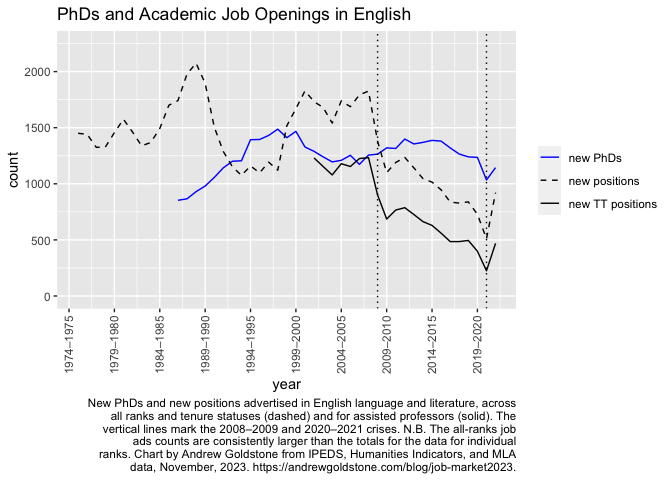A little more than a decade ago, foreign journalists living in Beijing, including myself, met for a long chat with a top Chinese diplomat. Those were different days, when high-ranking Chinese officials were still meeting with members of the Western press corps. The diplomat whom we met was charming, funny, fluent in English. She also had the latest iPhone in front of her on the table.
I noticed the Apple gadget because at the time, Chinese state news media were unleashing invectives on the Cupertino, Calif.-based company for supposedly cheating Chinese consumers. (It wasn’t true.) There were rumors circulating that Chinese government officials were being told not to flaunt American status symbols. The diplomat’s accouterment proved that wrong.
At the time, one could make the argument that China’s economic modernization was being accompanied by a parallel, if somewhat more laggardly, political reform. But the advent in 2012 of Xi Jinping, the Chinese leader who has consolidated power and re-established the primacy of the Chinese Communist Party, has shattered those hopes. And, as Patrick McGee makes devastatingly clear in his smart and comprehensive “Apple in China,” the American company’s decision under Tim Cook, the current C.E.O., to manufacture about 90 percent of its products in China has created an existential vulnerability not just for Apple, but for the United States — nurturing the conditions for Chinese technology to outpace American innovation.
McGee, who was the lead Apple reporter for The Financial Times and previously covered Asian markets from Hong Kong, takes what we instinctively know — “how Apple used China as a base from which to become the world’s most valuable company, and in doing so, bound its future inextricably to a ruthless authoritarian state” — and comes up with a startling conclusion, backed by meticulous reporting: “that China wouldn’t be China today without Apple.”
Apple says that it has trained more than 28 million workers in China since 2008, which McGee notes is larger than the entire labor force of California. The company’s annual investment in China — not even counting the value of hardware, “which would more than double the figure,” McGee writes — exceeds the total amount the Biden administration dedicated for a “once-in-a-generation” initiative to boost American computer chip production.
“This rapid consolidation reflects a transfer of technology and know-how so consequential,” McGee writes, “as to constitute a geopolitical event, like the fall of the Berlin Wall.”
McGee has a journalist’s knack for developing scenes with a few curated details, and he organizes his narrative chronologically, starting with Apple’s origins as a renegade upstart under Steve Jobs in the 1970s and ’80s. After Jobs’s firing and rehiring comes a corporate mind shift in which a vertically integrated firm falls for the allure of contract manufacturing, sending its engineers abroad to train low-paid workers in how to churn out ever more complicated electronics.
We only really get to Apple in China about 90 pages into the book, and that China, in the mid- to late 1990s, was mainly attractive because of what one China scholar called “low wages, low welfare and low human rights.” McGee relates how one Apple engineer, visiting suppliers in the southern Chinese manufacturing center of Shenzhen, was horrified that there were no elevators in the “slapdash” facility, and that the stairs were built with troubling irregularity: with, say, 12 steps (of varying heights) between the first and second floors, then 18 to the next, then 16, then 24.
But China at the turn of the millennium was in the process of joining the World Trade Organization, and its leaders were banking on an export-led economy that would learn from foreign investors. Starting in the 2000s the Taiwanese mega-supplier Foxconn constructed entire settlements for Chinese workers building Apple electronics. First up on the new assembly lines were iMacs that were produced by what became known as “China speed.”
Less than 15 years after Chinese workers began making Apple products en masse, Chinese consumers were buying them en masse, too. Covering China at the time, I chafed at the popular narrative that reduced Apple’s presence in China to a tale of downtrodden workers at Foxconn and other suppliers. Yes, there were nets outside factory dorms to prevent suicides; and wages remained low. Even Apple admitted to alarming labor abuses in its Chinese supply chain.
But that was only half the story. The iPhone in China signified success, an individualistic, American-accented flavor that seemed to delight both veteran diplomats and Foxconn workers I got to know in southwest China. Those of us who had lived in China for years could see that life was getting freer and richer for most Chinese. By the mid-2010s, it was the United States that seemed behind in terms of integrating apps into daily life. In China, at least in the big cities, we were already living in the tech future. (...)
In 2015, Apple was the largest corporate investor in China, to the tune of about $55 billion a year, according to internal documents McGee obtained for this book. (Cook himself told the Chinese media that the company had created nearly five million jobs there: “I’m not sure there are too many companies, domestic or foreign, who can say that.”) At the same time, Xi laid out “Made in China 2025,” his blueprint for achieving technological self-sufficiency in the next decade, dependent on Apple being what McGee calls “a mass enabler of ‘Indigenous innovation.’”
“As Apple taught the supply chain how to perfect multi-touch glass and make the thousand components within the iPhone,” he writes, “Apple’s suppliers took what they knew and offered it to homegrown companies led by Huawei, Xiaomi, Vivo and Oppo.” Today, some of these premium products come with specs that are increasingly ahead of American design, and have outsold Apple in many major markets.
by Hannah Beech, NY Times | Read more:
Image: Wang Zhao/Agence France-Presse — Getty Images
[ed. See also: China’s Rise, America’s Dysfunction, and the Need for Cooperation (Current Affairs):]
"Well, you’re absolutely right about that, but I can fully understand why Donald Trump wants to try and improve the livelihoods of the bottom 50 percent of Americans. I think that’s a noble goal that he has. I can understand why he wants to make American industries more competitive and re-industrialize America. That’s also an understandable goal. But I think he will find that the best way to achieve those goals is actually to work with the rest of the world. And one thing I’ve learned after studying geopolitics for 55 years is that you’ve got to be cold and calculating if you want to succeed in geopolitics, and if you’re emotional, then you’re at a major disadvantage.
So, for example, how did China become so wealthy so quickly? What they did was to work closely with the United States. Even though, technically, during part of the Cold War the U.S. was an adversary, China worked with the United States to grow its economy. And I think that’s one thing that is taboo in the United States, that actually the best way for the United States to regenerate its economic growth and make it grow faster is not to try and bring down China, but to work with China. Just as in the time when you were worried about Japanese cars taking over the United States, what did you do? You have voluntary export restraints. You enccourage the Japanese to set up factories—Toyota factories, Honda factories—in the United States. The same thing can be done with China. It can only be done if you are rational and calculating in your moves and not emotional and say, oh, no, we can never work with China. Why can’t you work with China? If working with China is going to bring benefits to the American people, why not work with them? Because at the end of the day, it’s very clear that all efforts to stop the rise of China by the United States will fail. You cannot stop a 4,000-year-old civilization that has its own civilizational cycles, and as it is rising, depriving them of this technology or that technology is not going to stop the rise of China."
I noticed the Apple gadget because at the time, Chinese state news media were unleashing invectives on the Cupertino, Calif.-based company for supposedly cheating Chinese consumers. (It wasn’t true.) There were rumors circulating that Chinese government officials were being told not to flaunt American status symbols. The diplomat’s accouterment proved that wrong.
At the time, one could make the argument that China’s economic modernization was being accompanied by a parallel, if somewhat more laggardly, political reform. But the advent in 2012 of Xi Jinping, the Chinese leader who has consolidated power and re-established the primacy of the Chinese Communist Party, has shattered those hopes. And, as Patrick McGee makes devastatingly clear in his smart and comprehensive “Apple in China,” the American company’s decision under Tim Cook, the current C.E.O., to manufacture about 90 percent of its products in China has created an existential vulnerability not just for Apple, but for the United States — nurturing the conditions for Chinese technology to outpace American innovation.
McGee, who was the lead Apple reporter for The Financial Times and previously covered Asian markets from Hong Kong, takes what we instinctively know — “how Apple used China as a base from which to become the world’s most valuable company, and in doing so, bound its future inextricably to a ruthless authoritarian state” — and comes up with a startling conclusion, backed by meticulous reporting: “that China wouldn’t be China today without Apple.”
Apple says that it has trained more than 28 million workers in China since 2008, which McGee notes is larger than the entire labor force of California. The company’s annual investment in China — not even counting the value of hardware, “which would more than double the figure,” McGee writes — exceeds the total amount the Biden administration dedicated for a “once-in-a-generation” initiative to boost American computer chip production.
“This rapid consolidation reflects a transfer of technology and know-how so consequential,” McGee writes, “as to constitute a geopolitical event, like the fall of the Berlin Wall.”
McGee has a journalist’s knack for developing scenes with a few curated details, and he organizes his narrative chronologically, starting with Apple’s origins as a renegade upstart under Steve Jobs in the 1970s and ’80s. After Jobs’s firing and rehiring comes a corporate mind shift in which a vertically integrated firm falls for the allure of contract manufacturing, sending its engineers abroad to train low-paid workers in how to churn out ever more complicated electronics.
We only really get to Apple in China about 90 pages into the book, and that China, in the mid- to late 1990s, was mainly attractive because of what one China scholar called “low wages, low welfare and low human rights.” McGee relates how one Apple engineer, visiting suppliers in the southern Chinese manufacturing center of Shenzhen, was horrified that there were no elevators in the “slapdash” facility, and that the stairs were built with troubling irregularity: with, say, 12 steps (of varying heights) between the first and second floors, then 18 to the next, then 16, then 24.
But China at the turn of the millennium was in the process of joining the World Trade Organization, and its leaders were banking on an export-led economy that would learn from foreign investors. Starting in the 2000s the Taiwanese mega-supplier Foxconn constructed entire settlements for Chinese workers building Apple electronics. First up on the new assembly lines were iMacs that were produced by what became known as “China speed.”
Less than 15 years after Chinese workers began making Apple products en masse, Chinese consumers were buying them en masse, too. Covering China at the time, I chafed at the popular narrative that reduced Apple’s presence in China to a tale of downtrodden workers at Foxconn and other suppliers. Yes, there were nets outside factory dorms to prevent suicides; and wages remained low. Even Apple admitted to alarming labor abuses in its Chinese supply chain.
But that was only half the story. The iPhone in China signified success, an individualistic, American-accented flavor that seemed to delight both veteran diplomats and Foxconn workers I got to know in southwest China. Those of us who had lived in China for years could see that life was getting freer and richer for most Chinese. By the mid-2010s, it was the United States that seemed behind in terms of integrating apps into daily life. In China, at least in the big cities, we were already living in the tech future. (...)
In 2015, Apple was the largest corporate investor in China, to the tune of about $55 billion a year, according to internal documents McGee obtained for this book. (Cook himself told the Chinese media that the company had created nearly five million jobs there: “I’m not sure there are too many companies, domestic or foreign, who can say that.”) At the same time, Xi laid out “Made in China 2025,” his blueprint for achieving technological self-sufficiency in the next decade, dependent on Apple being what McGee calls “a mass enabler of ‘Indigenous innovation.’”
“As Apple taught the supply chain how to perfect multi-touch glass and make the thousand components within the iPhone,” he writes, “Apple’s suppliers took what they knew and offered it to homegrown companies led by Huawei, Xiaomi, Vivo and Oppo.” Today, some of these premium products come with specs that are increasingly ahead of American design, and have outsold Apple in many major markets.
by Hannah Beech, NY Times | Read more:
Image: Wang Zhao/Agence France-Presse — Getty Images
[ed. See also: China’s Rise, America’s Dysfunction, and the Need for Cooperation (Current Affairs):]
"Well, you’re absolutely right about that, but I can fully understand why Donald Trump wants to try and improve the livelihoods of the bottom 50 percent of Americans. I think that’s a noble goal that he has. I can understand why he wants to make American industries more competitive and re-industrialize America. That’s also an understandable goal. But I think he will find that the best way to achieve those goals is actually to work with the rest of the world. And one thing I’ve learned after studying geopolitics for 55 years is that you’ve got to be cold and calculating if you want to succeed in geopolitics, and if you’re emotional, then you’re at a major disadvantage.
So, for example, how did China become so wealthy so quickly? What they did was to work closely with the United States. Even though, technically, during part of the Cold War the U.S. was an adversary, China worked with the United States to grow its economy. And I think that’s one thing that is taboo in the United States, that actually the best way for the United States to regenerate its economic growth and make it grow faster is not to try and bring down China, but to work with China. Just as in the time when you were worried about Japanese cars taking over the United States, what did you do? You have voluntary export restraints. You enccourage the Japanese to set up factories—Toyota factories, Honda factories—in the United States. The same thing can be done with China. It can only be done if you are rational and calculating in your moves and not emotional and say, oh, no, we can never work with China. Why can’t you work with China? If working with China is going to bring benefits to the American people, why not work with them? Because at the end of the day, it’s very clear that all efforts to stop the rise of China by the United States will fail. You cannot stop a 4,000-year-old civilization that has its own civilizational cycles, and as it is rising, depriving them of this technology or that technology is not going to stop the rise of China."



















